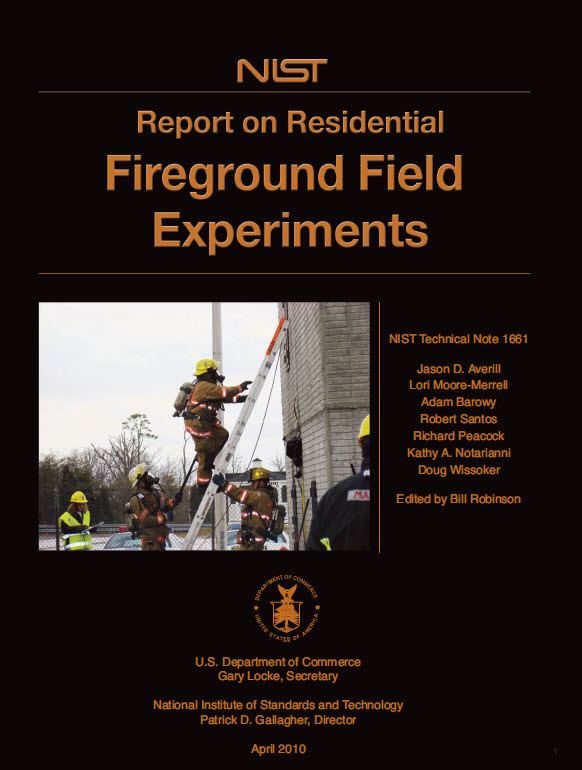NIST Report on Residential Fireground Field Experiments ISSUED
By Christopher J. Naum, SFPE on Jan 01, 2011 with Comments 0
Report-on-Residential-Fireground-Field-Experiments
The NIST Firefighter Safety and Deployment Study; Titled- Report on Residential Fireground Field Experiements was recently issued. A copy of the report is attached. The report is also available for download at the NIST, HERE
Report Abstract:
Service expectations placed on the fire service, including Emergency Medical Services (EMS), response to natural disasters, hazardous materials incidents, and acts of terrorism, have steadily increased. However, local decision-makers are challenged to balance these community service expectations with finite resources without a solid technical foundation for evaluating the impact of staffing and deployment decisions on the safety of the public and firefighters. For the first time, this study investigates the effect of varying crew size, first apparatus arrival time, and response time on firefighter safety, overall task completion, and interior residential tenability using realistic residential fires.
This study is also unique because of the array of stakeholders and the caliber of technical experts involved. Additionally, the structure used in the field experiments included customized instrumentation; all related industry standards were followed; and robust research methods were used. The results and conclusions will directly inform the NPFA 1710 Technical Committee, who is responsible for developing consensus industry deployment standards.
This report presents the results of more than 60 laboratory and residential fireground experiments designed to quantify the effects of various fire department deployment configurations on the most common type of fire—a low hazard residential structure fire. For the fireground experiments, a 2,000 sq ft (186 m2), two-story residential structure was designed and built at the Montgomery County Public Safety Training Academy in Rockville, MD. Fire crews from Montgomery County, MD and Fairfax County.
A were deployed in response to live fires within this facility. In addition to systematically controlling for the arrival times of the first and subsequent fire apparatus, crew size was varied to consider two-, three-, four-, and five-person staffing. Each deployment performed a series of 22 tasks that were timed, while the thermal and toxic environment inside the structure was measured. Additional experiments with larger fuel loads as well as fire modeling produced additional insight. Report results quantify the effectiveness of crew size, first-due engine arrival time, and apparatus arrival stagger on the duration and time to completion of the key 22 fireground tasks and the effect on occupant and firefighter safety
Addition project information and insights, HERE
Filed Under: Adaptive Fireground Management • Performance • Research • Research Hub
























